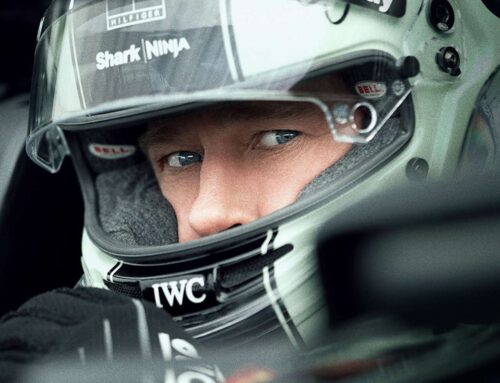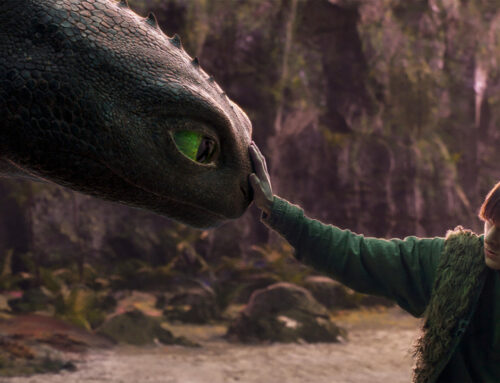Who said you can’t put theater on TV? The Pulitzer Prize and Tony Award-winning musical HAMILTON has made the quantum leap from stage to screen and the result is a stunning, exhilarating, technical and artistic triumph. The musical’s power, brilliance, and relevance has been cinematically galvanized for a country again on the brink of revolution. Everything I said about the play (read my review) applies, but here the electricity and immediacy of live performance is reconstituted by the focus and dramatic intimacy of film. The results are a bolt from Broadway and Hollywood and a welcome shock to the system. “Hamilton” the movie was originally scheduled to be released in theaters in October 2021, but because of the pandemic, the studio decided to release the film earlier on its subscription streaming service Disney+ on July 3. Now almost everyone can see it–and I can’t think of a more apt or thrilling way to spend 4rth of July weekend.
Inspired by Ron Chernow’s biography “Alexander Hamilton,” creator and star Lin-Manuel Miranda ingeniously reinvented the story of one of the founding fathers for the stage and put a racially diverse cast at its core, who then delivered a blistering, layered, urgently inspiring hip hop hybrid musical for the ages. Groundbreaking and wildly successful when it debuted on Broadway on August 6, 2015, HAMILTON has harnessed history, cloaked it in contemporary musical vernacular, and tapped into its eternal relevance as a fervent call to revolt against tyranny. “We will never be free until we end slavery” –that recurring line in the musical was as relevant to the founding fathers seeking to shed the yoke of British monarchy as it is now to the cries for atonement for the sins of the fathers– the original sin of black slavery– and for the dismantling of the white male patriarchy which continues to dominate the world stage.
That HAMILTON is now a movie, internationally accessible on all manner of screens to millions of people everywhere– not just those who could afford a theater ticket– is not only necessary, but may just save the theater, which is fighting for its own survival. The film was shot over three days onstage at the Richard Rodgers Theatre in NYC with the original broadway cast, an awesome ensemble of transcendently gifted actors who audaciously scale elaborately rapped lyrics embedded in a driving score that hooks your heart and your brain, tethering you to the moment and propelling you through these tumultuous events.
After a brief on-camera introduction by Lin-Manuel Miranda and original Broadway and now film director Thomas Kail, the movie traces the rise of Alexander Hamilton the Caribbean-born “bastard, orphan, son of a whore” abandoned by his father who heads to America with only his considerable drive, dazzling intellect, and a potent gift for words–he made “palaces out of paragraphs.” His budding acquaintance with another orphan he meets at Princeton, the calculating Aaron Burr played by a cool Leslie Odom Jr., was temperamentally 180 degrees from the fiery Hamilton. Theirs was a fraught association which would prove fatal when Burr eventually shot Hamilton in a duel. Lin-Manuel Miranda may not be as vocally gifted as the rest of the cast, but his performance is potent, deeply-felt and rooted in the clear conviction of someone who lives this character from the inside out.
A swaggering Thomas Jefferson (Daveed Diggs in a bravura dual role also as the Marquis de Lafayette) blows in from France wondering “What did I miss?” The towering George Washington (Chris Jackson oozing gravitas as the noble and wise first president) understands he must transfer power by stepping down, showing the country how to move on and that it can survive. A trio of Schuyler sisters: Angelica the eldest and wisest played by the queenly Renee Elise Goldsberry, middle sister Eliza is tenderly played by Phillipa Soo as Alexander’s steadfast wife, and youngest sister Peggy is Jasmine Cephas Jones in a dual role as Maria Reynolds a woman who will later complicate Hamilton’s life. These three voices are resplendent together and separately, as they navigate their fates as women bound more tightly by the conventions of the day. And then there’s the hilariously smug Royal, King George played with simpering cluelessness by Jonathan Groff. The camera loves lingering on his bewigged crown and smirking visage.
Thomas Kail again directs his Broadway cast with abandon and his camera with restraint, trusting what is already onstage to shine. It’s an extraordinary amalgam of movement, lighting, sets, and song. This non-stop ensemble underlines every twist and turn in a highly charged plot, political and personal, as America takes shape on the world stage. The camera judiciously picks out moments to emphasize, angling our attention within the whir of continually unfolding events. Close ups provide emotional focus and welcome visual relief from the relentless stage movement, adding the visual texture and intimacy afforded by a live performance before us onstage, but which is lost in the stasis of a wide shot flattened onscreen. The camera and clear audio of film also helped me hear and absorb the intricacies and internal rhymes of Miranda’s warp-speed lyrics. Occasionally, an overhead shot was interesting, but unnecessary, and at another time the extraordinarily evocative staging of a hurricane should have been left to play wide. But mostly, the camera has become part of the living breathing organism that is this inherently theatrical event, enabling and dramatically enhancing what was so alive on stage.
In fact, I believe the movie at 2 hours and 40 minutes (with a one-minute intermission to catch your breath) will only increase an appetite to see HAMILTON live again. It’s scheduled to be back onstage in Boston a year from now in July 2021, pandemic allowing. In the meantime, who knows what history we’ll make, and what this revolutionary Alexander Hamilton who sang the haunting “I am not throwing away my shot” will mean to us going forward?






Leave A Comment
You must be logged in to post a comment.